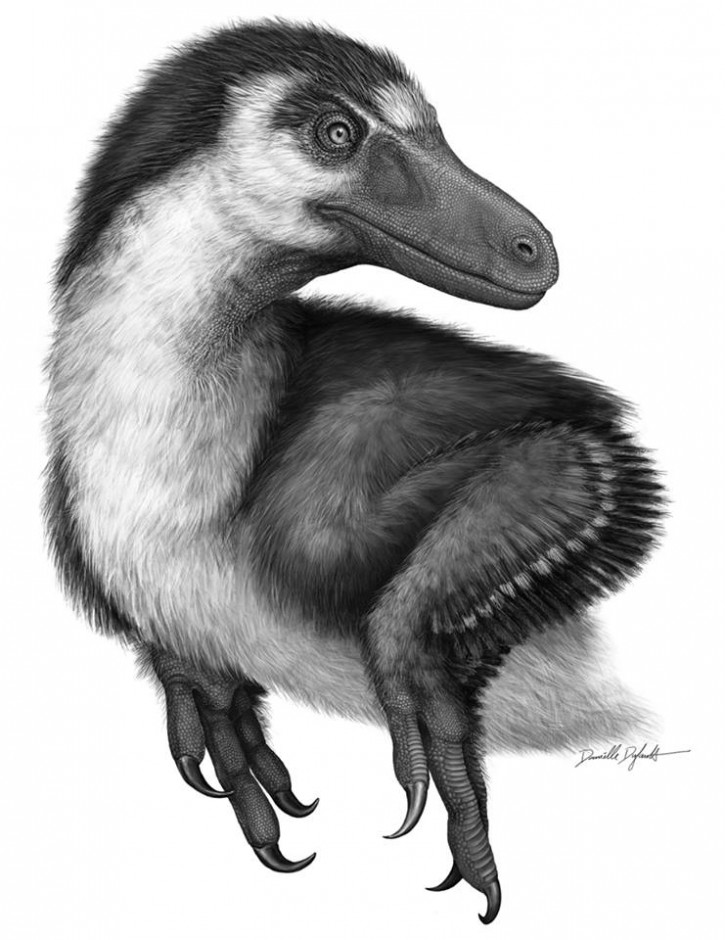So I don’t normally blog whenever a new dinosaur pops out the pages, but a new one, Acheroraptor temertyorum received quite a welcome back to the living world with this exquisite illustration by Danielle Dufault. I’ve asked for her permission to post on here, and it’ll appear on the front cover of Naturwissenschaften (December issue, probably), so defo worth checking out a hard copy!

Acheroraptor, in all its glory (click for larger, or email Danielle!)
A few deets
Acheroraptor actually means ‘underworld thief’, making it one of the cooler named dinosaurs we have. From the Hell Creek Formation, from the latest Cretaceous of North America, Acheroraptor would have existed alongside the notoriously infamous Tyrannosaurus rex, as well as other dinosaur superstars like Triceratops.
Previously, dromaeosaurid remains from the Maastrichtian were only known from tooth fossils, which means that although we know they definitely existed, it was difficult to assign them to a particular or new species.
As a dromaeosaurid dinosaur, Acheroraptor actually represents the last surviving member of this group, and is probably closely-related to Asian dromaeosaurids such as Velociraptor mongoliensis, from, you guessed it, Mongolia. Interestingly, this suggests a rather complex biogeographical pattern between North America and Asia during the Late Cretaceous, with faunal exchange happening in a bi-directional manner.
A rather timely piece describing the history of bird evolution has just been published here too, by Daniel Ksepka. Worth popping on a brew and having a read.
Reference:
Evans, D. C., Larson, D. W. and Currie, P. J. (2013) A new dromaeosaurid (Dinosauria: Theropoda) with Asian affinities from the latest Cretaceous of North America, Naturwissenschaften, 100(11), 1041-1049


Pingback: Fossil and Forum Friday, Holiday edition « paleoaerie